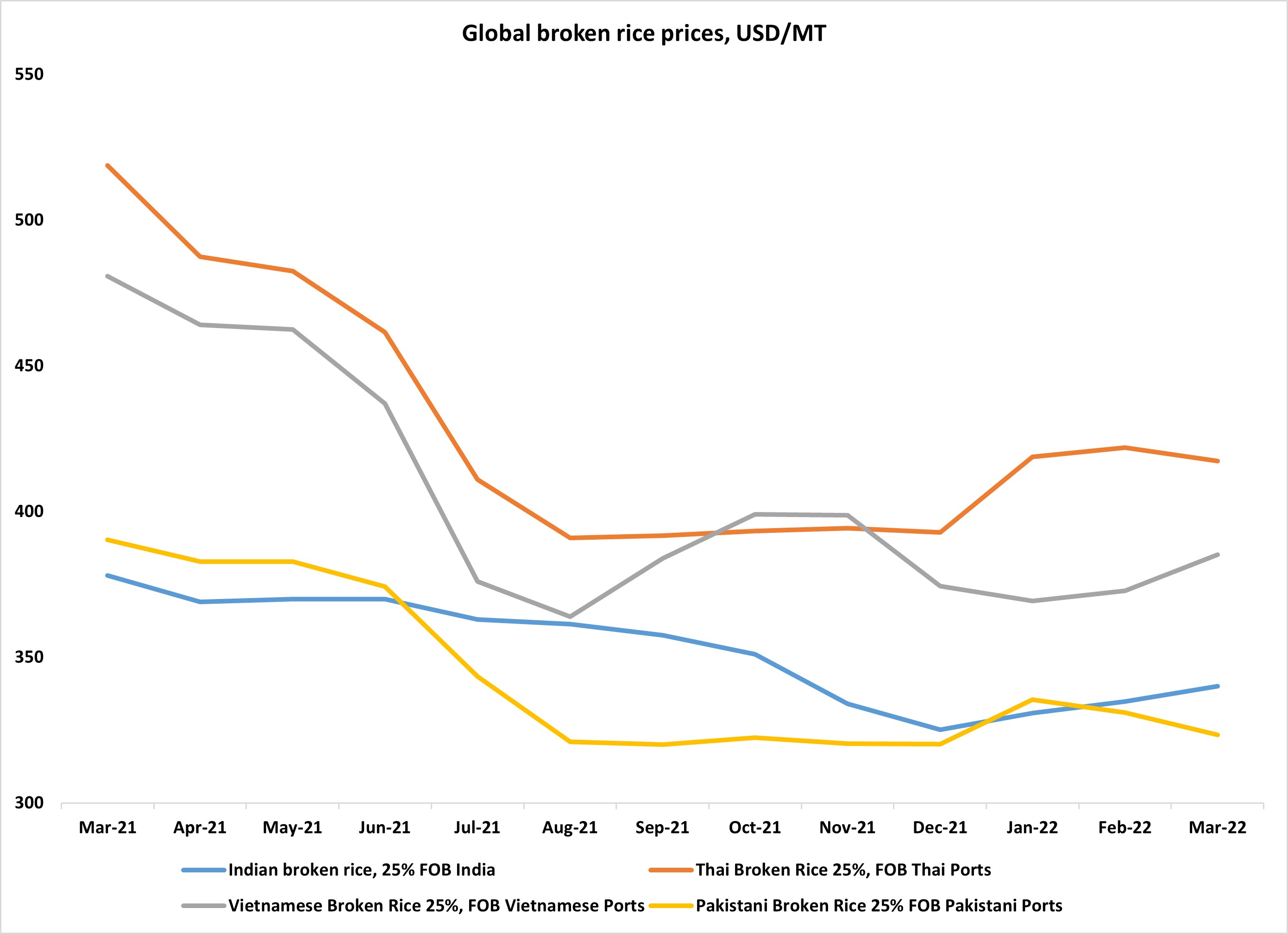Global demand for South Asia broken rice surge as grain prices jump

The global demand for broken rice has surged over the past one and a half years, with China leading the list of the major importers in 2021. Chinese consumption comes from the animal breeding sector, as Chinese farmers are racing to rebuild the pig herd, which had suffered from the biggest ever ASF epidemic earlier in 2018. As corn prices on the global market are getting higher, the local agricultural factor is ramping up on buying cheaper broken rice from South Asia, especially from India and Pakistan.

Source: FAO
The most significant reason for the firm demand is its higher price competitiveness than Vietnamese and Thai prices. In March last year, broken Vietnamese rice cost USD100/mt more than Indian broken rice. In March 2022, export prices between the mentioned positions differed by USD65/mt. Indian prices gradually increased over the last half a year, as the demand from China was pulling prices up. However, ample supplies are slowing the pace of the price increase.
China imported a record 2.47 million mt of broken rice in 2021, up from 1 million mt in 2020. The structure of the major suppliers has also changed, with India taking the first place, pushing out the leadership from the following traditional shippers: Vietnam, Myanmar, and Thailand. India exported over 1.1 million mt of broken rice to China last year, up from only 29,625 mt a year earlier. Pakistan became the second-largest broken rice exporter to China, with shipments reaching 493,655 mt in 2021 or 20% of Chinese imports.
In 2022 the demand for South Asian broken rice remains solid, as the most recent export data show. In January-February 2022, India exported 435,033 mt of broken rice to China, up 270% from last year. A surge in global corn prices amid tightening supplies caused by geopolitical instability in the Black Sea region makes Chinese importers buy more broken rice to lower feed costs and slow down inflation. In 2021, China imported over 7.91 million mt of Ukrainian corn, accounting for 32% of total Ukrainian exports. Considering that Ukrainian ports have suspended shipment, China will be switching to different countries and buying more feed complements, putting a stronger emphasis on broken rice.